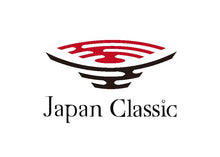【Japanese Pottery】Oxidation vs Reduction Firing: How Kiln Atmosphere Transforms Ceramics
Table of Contents
1. State of the Flame
During firing, the flame undergoes various changes and can be broadly classified into oxidation flame, neutral flame, and reduction flame.
These flame conditions affect the color of the clay body and the final appearance of glazes.
Note that only electric kilns operate solely in oxidation firing mode.
A candle flame provides a clear analogy: its inner core appears dark blue—indicating a neutral to reduction state—while the color brightens toward the outer edge, indicating oxidation.
The oxidation flame, exposed to ambient air, contains ample oxygen for complete combustion, whereas the reduction flame inside lacks oxygen and appears pale blue due to incomplete combustion. In other words:
In other words:
・Oxidation firing is a state of complete combustion with sufficient oxygen supply.
・Reduction firing is a state of incomplete combustion with limited oxygen supply.
Applied to a wood‑fired kiln, the area around the firebox tends toward reduction, and zones farther inside shift toward oxidation.
As wood burns, it consumes oxygen and creates a reducing atmosphere; once the wood is fully consumed, the atmosphere returns to oxidation.
In a single‑chamber anagama kiln (穴窯), air enters through the firebox and grate (rostle), fueling the fire. The flame’s heat rises to the ceiling, then descends toward the floor before spiraling upward along the kiln’s slope toward the chimney.
The flame’s heat rises to the ceiling, then descends toward the floor before spiraling upward along the kiln’s slope toward the chimney.
Closing the damper restricts airflow, increasing internal pressure and causing oxygen deprivation (reduction).
Conversely, opening the damper allows heat to escape through the chimney, drawing fresh air in from the firebox (oxidation).
During firing, the kiln is slowly heated in oxidation mode from the start until around bisque temperature, with the damper fully open and wood added gradually.
Afterward, minor adjustments are made using small air‑control holes near the damper rather than frequent damper changes.
Placement in the kiln serves as a guideline: pieces intended for reduction are placed near the firebox, while those for oxidation go farther inside.
However, variations in ceiling and floor temperatures, flame intensity, and the heat tolerance of each clay and glaze also affect results.
Kiln structure, type, and individual firing techniques vary widely, so this simple overview provides a sufficient conceptual image of oxidation and reduction firing.
2. Differences Between Oxidation and Reduction Firing
Oxidation and reduction atmospheres produce distinctly different colors in both glazes and clay bodies.
For example, a copper glaze fired in oxidation yields green, whereas reduction firing produces red (known as copper red or tenmoku glaze).
Commercial white stoneware clay fires white under oxidation but turns gray and vitrifies under reduction.
Thus, firing atmosphere dramatically alters the final appearance of ceramic works.
Both oxidation and reduction flames ultimately reach temperatures exceeding 1,200 °C, but reduction atmospheres tend to inhibit temperature rise due to oxygen deficiency.
Adding wood during reduction further suppresses temperature increases until the fuel is consumed and the dull blue reduction flame clears.
To achieve an oxidation atmosphere, new wood is added only after existing fuel is nearly burned away. To maintain reduction, fuel is left partially unburned.
Strong reduction is indicated by black smoke from the chimney and flame flare‑ups visible through peep holes.
At temperatures between 900 °C and 1,000 °C—when clay and glaze begin to change—the firer adjusts the kiln to the predetermined oxidation or reduction state.
Through these controlled processes, a wide variety of ceramic effects and finishes are achieved.




Leave a comment